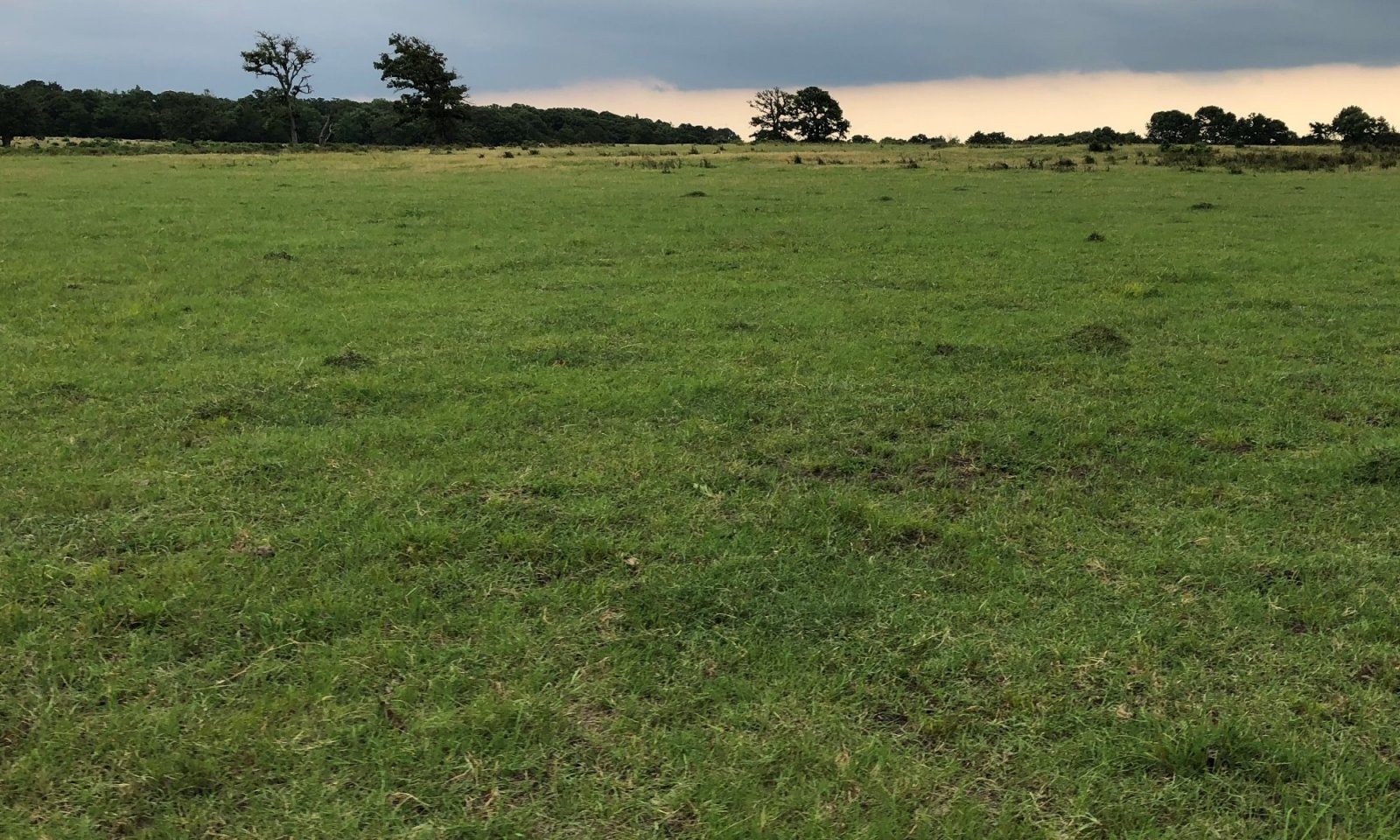
Claypan 38-42 PZ
Scenario model
Current ecosystem state
Select a state
Management practices/drivers
Select a transition or restoration pathway
- Transition T1A More details
- Transition T2A More details
- Transition T3A More details
-
No transition or restoration pathway between the selected states has been described
Target ecosystem state
Select a state
Description
This is the reference state for the Clay Upland ecological site. It represents the historic range of variability in the plant communities with the periodic disturbance of fire and grazing. It is dominated by herbaceous plants with few woody species.
The dominant grasses are big bluestem, Indiangrass, switchgrass and little bluestem. Other grasses include Texas cupgrass, sideoats grama, dropseeds, silver bluestem and Scribner’s panicum. Dominant forbs include Engelmann daisy, sunflowers, western ragweed, heath aster, poppymallows and pitcher sage. Legumes include wild indigo, yellow neptune, Illinois bundleflower, scurfpea, and native lespedezas. Few woody species persist in reference condition but may include sumacs, sand plum, coralberry, persimmon and blackberry. The Clay Upland site is estimated to produce between 2,000 – 5,000 pounds of vegetative production per year in reference condition.
Tallgrasses Midgrasses Forbs
Shrubs and Trees are a minor component of these sites.
Submodel
Description
This state represents a change in land use from rangeland to pastureland. The soil structure and biology has been altered and the site is dominated by introduced species. Management of introduced forages requires more inputs than native grasses. Careful consideration should be taken prior to planting to ensure the result meets the desired use. Ratings for forage yields can be found under the non-irrigated crop yield section in web soil survey. As with any fertility management program, current soil tests should be taken before planting and subsequent fertilization of introduced pastures.
The most common forage species on these sites include Bermudagrass and Old World Bluestems(eg. KR Bluestem).
Without brush management, woody species such as mesquites, junipers, elms, or honey locust may invade these sites.
There may be opportunities to plant native grass species on these sites to restore the reference plant communities. The success of this type of restoration is highly variable and depends on the remaining soil resources and past management. This type of endeavor often requires site specific planning and evaluation. However, the species described in the reference state are a good resource for initial planning of any restoration project.
Description
This state describes the invaded, woody dominated plant community of the Claypan site. The ecological processes are dominated by woody species including mesquite, honey locust, elm, and juniper species. Some herbaceous plants persist under the woody canopy or in interspaces. Usually, shade tolerant species like Texas wintergrass are prominent herbaceous components in this community. There may also be an increase in prickly pear in this state.
Mechanism
Most of these sites were cultivated for crop production during the settlement of the area. Many of them have been planted to monocultures of introduced forage grasses in recent years. When these sites are cultivated, the soil properties are significantly altered from the reference state. Soil structure, hydrology and biology have been impacted and the site is transitioned to the Converted state.
Mechanism
These sites are prone to invasion by juniper, mesquite and honey locust. Without brush management, brush invasion may increase to the point where the site transitions to the Invaded Woodland state. At this point it will take significant inputs to remove woody species and restore the grass dominated pasture.
Model keys
Briefcase
Add ecological sites and Major Land Resource Areas to your briefcase by clicking on the briefcase (![]() ) icon wherever it occurs. Drag and drop items to reorder. Cookies are used to store briefcase items between browsing sessions. Because of this, the number of items that can be added to your briefcase is limited, and briefcase items added on one device and browser cannot be accessed from another device or browser. Users who do not wish to place cookies on their devices should not use the briefcase tool. Briefcase cookies serve no other purpose than described here and are deleted whenever browsing history is cleared.
) icon wherever it occurs. Drag and drop items to reorder. Cookies are used to store briefcase items between browsing sessions. Because of this, the number of items that can be added to your briefcase is limited, and briefcase items added on one device and browser cannot be accessed from another device or browser. Users who do not wish to place cookies on their devices should not use the briefcase tool. Briefcase cookies serve no other purpose than described here and are deleted whenever browsing history is cleared.
Ecological sites
Major Land Resource Areas
The Ecosystem Dynamics Interpretive Tool is an information system framework developed by the USDA-ARS Jornada Experimental Range, USDA Natural Resources Conservation Service, and New Mexico State University.
